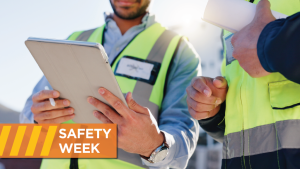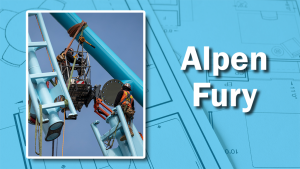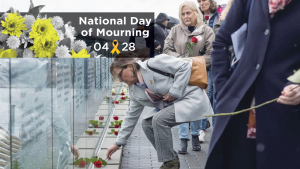VANCOUVER – The construction industry is hit harder by hearing loss than any other industry, but there is hope in prevention, education and mitigation.
That’s the message WorkSafeBC occupational audiologist Sasha Brown brought to the BC Construction Safety Alliance’s Health and Safety conference held recently in downtown Vancouver.
While the construction industry is one of the noisiest industries it is also difficult to avoid worksite noise, Brown said, though there are some mitigation solutions.
“There’s ways to reduce the noise, be it adding oil to equipment or moving an air compressor if it doesn’t need to be next to you or applying a muffler. It may not reduce it to a level where it’s no longer a hazard, so then we’re down to personal protective equipment (PPE), which is hearing protection and the biggest thing is making sure it’s worn properly,” Brown said.
The construction industry also has a higher rate of noise induced hearing loss (NIHL) than other industries, she said, though the trend has improved somewhat over the last two decades.
“It’s a kind of hearing loss caused by noise in a specific region in the inner ear,” Brown said. “It’s a permanent form of hearing loss so there’s no fixing it.”
“This points to high noise levels, but there are other noisy industries where we aren’t seeing that high rate, so some of it comes down to understanding the implications of long durations of exposure to lower levels of noise around 85 dBa,” Brown added.
The more education and training workers receive, Brown said, the lower the rate of on-the-job hearing loss. WorkSafeBC uses a number of methods to deliver training.
“There’s a lot of evidence to show the more an employee or employer is aware of the effects of noise on their own hearing the more likely they are to make changes and do things to protect it. At WorkSafeBC we’re trying to make resources that are accessible and useable for anybody and tweak them so that they’re useful,” she said.
Prevention is also important because the cost of hearing aids and other devices can be very high, Brown added.
“$25 million is spent in B.C. alone on hearing aids, and over a million dollars just on hearing aid batteries. In part it’s because hearing aids are expensive although we don’t pay that high rate, but it’s just the high volume of noise and hearing loss claims,” she said.
Hearing loss not only affects immediate perception but can contribute to cardiovascular disease, high blood pressure, hypertension and even dementia, Brown said.
“Noise actually has an impact on our central nervous system, which releases adrenaline, cortisols and stress hormones to keep our body ready and primed to do things. If that’s constantly being stimulated, we’re releasing those chemicals and they tend to constrict our blood vessels, affect our digestion and change how we digest glucose which can lead to diabetes, and all these things can ultimately cause cardiovascular effects,” she said. “With dementia, it’s more around hearing loss in general. Correlations are starting to show between loss of sensory input and dementia.”
There are steps available to prevent and mitigate worksite hearing loss, Brown said, starting with annual hearing tests.
“It’s not even just about the hearing test but also the information people get at those tests which goes with education and training. From a WorkSafeBC perspective we try to make that as easy as possible by having lots of technicians who are certified and motivated to do that,” Brown said.











Recent Comments
comments for this post are closed